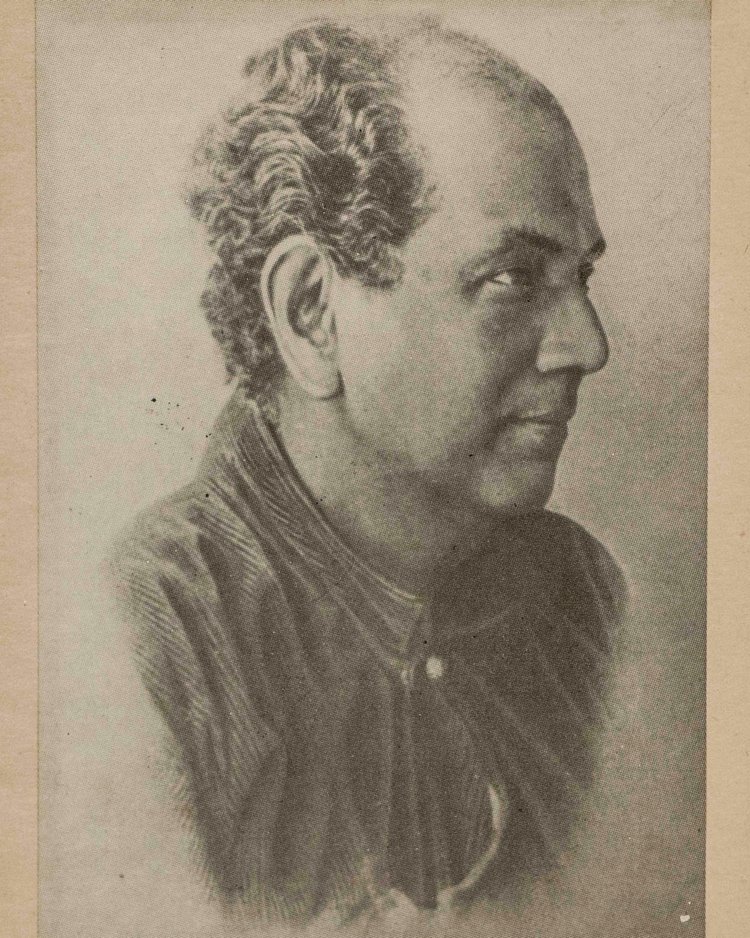Abanindranath Tagore (1871-1951)
Born in Jorasanko Thakurbari, Kolkata, Abanindranath Tagore is fondly remembered as an essential figure in Indian Art for restoring the dwindling inner-belief-system in the landscape of Indian art. Encouraged by Jyotirindranath and Jnanadanandini Devi, he pursued art with an immense passion. He was appointed Rani Bageswari Professor of Art at the University of Kolkata.
His career as an artist had begun around 1891. His first works appeared in Sadhana magazine. He received academic training in art from Olinto Gilhardi and an English teacher of oil and watercolour, Charles Palmer. Abanindranath was home tutored in Bengali, English, Sanskrit and Persian languages. His name figures with that of Raja Ravi Varma in discourses related to the beginnings of modern art in India.
The pages of ‘Sadhana’ marked his debut as an artist; one of his illustrations of Dwijendranath Tagore’s poem ‘Swapnaprayan’ was published in its 1298 Agrahayan inaugural issue (Nov-Dec, 1891). The later issues carried more of his illustrations, including those for Tagore’s poems ‘Badhu’ and ‘Bimbavati’. He incorporated Chinese and Japanese symbolism to bring about the liberation of Indian art. Okakura’s visit to India in 1902 deeply influenced Abanindranath’s art form. His “Indian Classic” art form often projected Asia as spiritual which stands in stark contrast to Europe’s ‘othering’ of the continent. The form has a touch of Japanese origin with roots reaching biotic layers of the shared history of local communities. The Bengal School was soon characterized by its unique miniature water-colour paintings based on ‘wash’ and ‘rhythmic lines’.
Abanindranath’s unorthodox teaching methods moulded a new generation of painters, Nandalal Bose, Asit Halder, Kshitindranath Majumdar, Jamini Roy, and S. N. Gupta whose subjects and styles were rooted in the traditional Indian paintings; concerned with cultural and national-revival of the country. Following Rabindranath Tagore’s death in the year 1941, Abanindranath was posted as Vice-Chancellor at the Visva Bharati University, Santiniketan. Over 500 paintings of Abanindranath are conserved at Rabindra Bharati’s Society’s collection in Jorasanko, Kolkata.
Exhibition:
India Art Fair 2015
Abanindranath Tagore | Untitled | Watercolour on paper | 9.75 x 6.75 in


